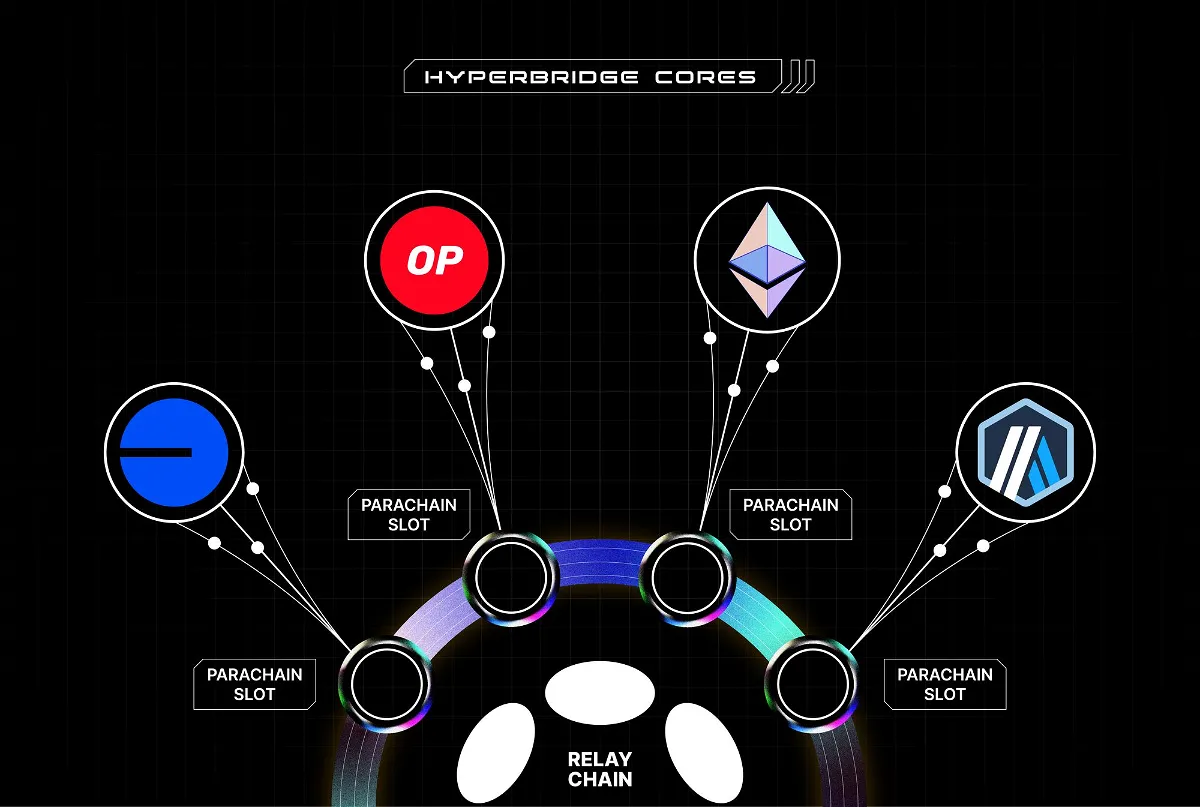Hyperbridge Nexus
The Hyperbridge blockchain is designed to be the Nexus of secure cross-chain interoperability. Hence the name. Hyperbridge is at its fundamental level, a coprocessor for expensive cryptographic operations needed to confirm the validity of cross-chain messages.
Crypto-Economic Coprocessor
The Hyperbridge blockchain performs all the necessary computation needed to certify the validity of cross-chain messages and presents a single proof to any chain to prove the finality of the aggregated messages. This architecture pioneered by Hyperbridge, introduces a new class of coprocessors called crypto-economic coprocessors that leverage their consensus proofs to attest to the correctness of the computations performed onchain (ie within its state transition function).
This crypto-economic coprocessor model is what enables Hyperbridge to scale trust-free interoperability to all blockchains. But it also places some requirements that must be met by the Hyperbridge blockchain to be scalable, fast and fully-secure. We've chosen the Polkadot relay chain as the base layer because it fully meets these requirements in a way that no other blockchain can.
Fast Finality
The Nexus blockchain inherits the fast finality of the Polkadot relay chain. This means that consensus proofs for the work done by the Hyperbridge blockchain can be obtained quickly and sent to a destination chain. This is what enables fast finality for cross-chain messages that are routed through the Hyperbridge blockchain. Polkadot provides finality for parachain blocks in a record 30 seconds, much faster than any other rollup solution. Contrast this with an Ethereum rollup, whose finality can vary from 21 minutes (optimistically) all the way to 7 days. This provides fast message passing for applications and users who rely on the Hyperbridge blockchain for cross-chain communication.
Economic Security
The Nexus blockchain is secured by the Polkadot relay chain. This economic security is fully attributable. Unlike restaked security models where economic security and validators are rehypothecated across multiple chains, the Polkadot relay chain provides a direct and fully attributable security model. In this model, its validators are not overloaded across parachains for (obvious) security reasons. It means faults are isolated, attributable and therefore accountable. The offending validators can be slashed, permissionlessly (no committee approvals needed), without issue.
Execution Sharding
Polkadot provides a sharded design that allows for the execution of multiple parachains in parallel. This means that the Nexus blockchain can take advantage of multiple parachain cores (née parachain slots) to shard the work of validating cross-chain messages in parallel, providing a high throughput for cross-chain communication. This is a critical feature for the Nexus blockchain to be able to scale to meet the demands of the multi-chain ecosystem.

Cheap Consensus Proofs
Polkadot introduces BEEFY, a secondary consensus protocol that produces the cheapest consensus proofs of any blockchain. Since Hyperbridge uses Polkadot as its consensus layer, this means that Polkadot's consensus proofs are what attest to the finality of Hyperbridge blocks. This consensus proof must be sent to the destination chain to prove the finality of the cross-chain messages that have been aggregated on the Hyperbridge blockchain. This is critical to its crypto-economic coprocessor architecture, as it leverages the cheap consensus proofs of the Polkadot relay chain to attest to the correctness of the work done by the Hyperbridge blockchain.
Runtime Modules
These are the runtime modules that make up the Hyperbridge blockchain. These modules are responsible for implementing the various components of the protocol, such as the consensus and state proof verifiers, cross-chain governance, relayer incentivization, and other components. The runtime modules included in Hyperbridge are: